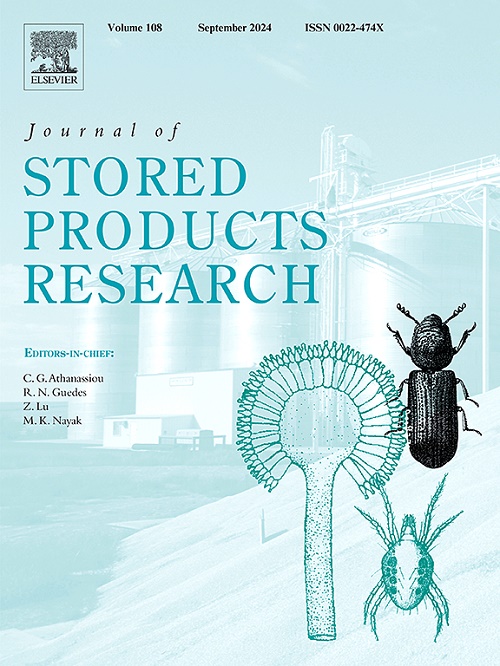Two novel densoviruses from storage pests insects (Zophobas morio and Tenebrio molitor) in Türkiye: Genomic and ultrastructural comparison
IF 2.7
2区 农林科学
Q1 ENTOMOLOGY
引用次数: 0
Abstract
Densoviruses are small, linear, single-stranded DNA viruses that are 18–28 nm in size and can be filtered. Densoviruses are also known as the ‘black wasting virus' because they cause acute infections in their hosts, causing them to turn black and die. In this study, densoviruses were isolated for the first time from the larvae of the storage pests Tenebrio molitor and Zophobas morio in Türkiye. Although both warehouse pests are consumed as pet food and, in some countries, as human food, they are known to cause respiratory problems such as asthma, anaphylaxis, and separation anxiety. Isolated viruses in this study, named TmDNV-TR and ZmDNV-TR, respectively. Morphological and molecular characterizations of both isolates were performed. Transmission electron microscopy analyses showed that the viruses had a circular inclusion morphology with mean diameters of 22.19 nm (ZmDNV-TR) and 28.95 nm (TmDNV-TR), and TmDNV-TR was significantly larger than ZmDNV-TR. Genomic analysis revealed that the 5467 bp region contained five open reading frames (ORFs) in both viral genomes. The genomic similarity between the isolates was found to be 98.92% and there were amino acid variations, particularly in non-structural 3 (ns3). Interestingly, the phylogenetic tree based on the ZmDNV-TR genome sequence and the results of the Kimura-2 parameter analysis showed a close relationship with a Blattella germenica densovirus. When the genome was digested in silico with restriction enzymes (BsmAI, ApeKI, and BbvI), it was observed that there was an excess of bands in ZmDNV-TR compared to TMDNV-TR for all three enzymes. In this study, for the first time, two different densovirus isolates were obtained from the same insect breeding farm and compared in terms of both structural size and genomics. The spontaneous death of many insects in the breeding farm suggests that this epidemic is vertically transmitted and may be an ideal biological control agent.
求助全文
约1分钟内获得全文
求助全文
来源期刊
CiteScore
5.70
自引率
18.50%
发文量
112
审稿时长
45 days
期刊介绍:
The Journal of Stored Products Research provides an international medium for the publication of both reviews and original results from laboratory and field studies on the preservation and safety of stored products, notably food stocks, covering storage-related problems from the producer through the supply chain to the consumer. Stored products are characterised by having relatively low moisture content and include raw and semi-processed foods, animal feedstuffs, and a range of other durable items, including materials such as clothing or museum artefacts.

 求助内容:
求助内容: 应助结果提醒方式:
应助结果提醒方式:


